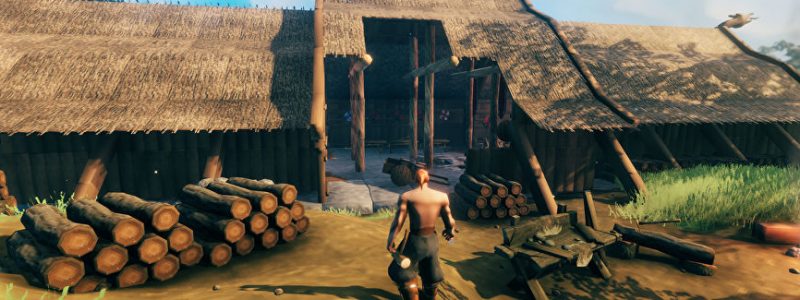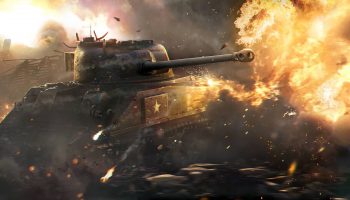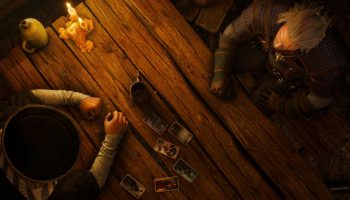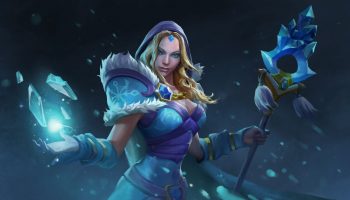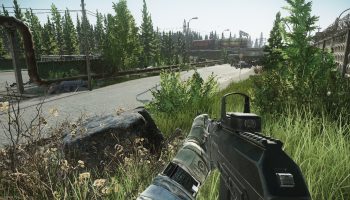This is just for funsies. It would be cool if there was truth to any of it, but I'm sure most of it is coincidental—there's very little actual evidence. Potential spoilers for any very slow or very new players who have somehow managed to avoid them to this point.
So I had a thought about how each biome seemed like it could match one of the nine realms. I did a search of the sub because I would have been shocked to be the only person who'd thought of it, and did find . I don't agree with everything, but there are some parallels. The Valheim wiki also mentions possible connections, but only for Ashlands and Deep North. The more I thought about it, though, the more I thought it could be more complicated than that. See, the Nine Realms aren't really well-described (and Christian influence complicated that), so linking biome to realm and calling it a day is workable but misses other interesting links. I'm going to Anglicize the hell out of these and probably be inconsistent at it, so if that's a pet peeve of yours, I get it—this is your warning.
Meadows:
- If you're like me and blind, or just have bad night vision, consider yourself informed that it wasn't a giant raven with weird legs that brought you to the meadows—it was a valkyrja. That matters, but not specifically because valkyrjur brought slain warriors to Valhalla (but that's worth knowing, too). Folkvang is described as a meadow or field that belongs to Freyja, where half of the valiant dead go upon death. There's speculation that Freyja's selection of dead warriors means she was a valkyrja or the archetype upon which valkyrjur were based.
Black Forest:
- Jarnvid is a forest inhabited by "troll wives" who produce jotnar and wolves.
- Jotunheim is described as having dark, dense forests and mountains always covered in snow.
- Also possibly Midgard, because in some depictions of Yggdrasil, Jotunheim surrounds Midgard, and this could imply similar landscapes.
Swamps:
- Hel. There's no direct connection between Hel and swamps—i.e., Hel is never described thus—but it's a fact that swamps are places of decay (death), and all of the mobs there are undead, some with a poison effect (which is commonly connected to death for obvious reasons). The sole exception is surtlings, but these can still be connected to Hel via the Christian influence of a fire-and-brimstone hell. A particularly interesting potential connection in the game is the lore, where the runestones describe the draugar as being arrogant and challenging the gods, so they were struck down. It's reasonable to assume that if you offend the gods they won't let you into their halls, so Hel is one of your possible remaining destinations.
- There's also Nastrond ("Corpse Shore"), a miserable place at the edge of Hel where the scum of Viking society go to have their corpses nommed by Nidhogg. Descriptions of Nidhogg have led to speculation of it acting in the capacity of a really macabre phoenix, suggesting something like rebirth/reincarnation (though not in the context of being undead).
Mountains:
- Jotunheim again, since it has eternally snowy mountains.
- Midgard, too, maybe.
- Tentatively, Nidavellir ("Dark Fields," a.k.a., Svartalfheim), beneath the surface of which dwarves dwell. I have read Nidavellir being described as a mountainous, but there was no actual proof of that in my sources; the dwarves live underground and are miners, but that doesn't require mountains—it's just an easy assumption to make.
Plains:
- While apparently frequently depicted as forested, Vanaheim has no proper description, but the Vanir are commonly associated with fertility, so it's not completely crazy to imply fertile soil with many great trees. However, the Vanir are also associated with agriculture, and for now, the plains are the only place where you can grow all crops (and with Mistlands being dark, Ashlands being scorched and hot, and Deep North being ice and snow, that isn't likely to change without adjusting early biomes, which itself isn't likely if you're supposed to explore).
Mistlands:
- Hel/Niflhel/Niflheim—all of these names seem to overlap at one point or another—was a primordial land described as misty, cold, and dark. Mistlands delivers all of these, as well as the link to death with the skulls that were/are supposed to be there.
- So there's a slight chance some interpretation of Hel Lokadottir—who was never loved by the Aesir and discarded to rule Hel to get her out of the way—might be the boss, possibly with a more monstrous appearance than she's often depicted since her mother, Angrboda, was considered the mother of monsters. Given that the bosses tend to resemble one of the common inhabitants of their biome, and Mistlands has been shown to be loaded with spiderwebs, and there are various legends of creatures that are half woman and half spider (e.g., the jorogumo yokai of Japan, Arachne of ancient Greece) or weaving goddesses associated with spiders (such as Uttu), a spider is a reasonable possibility. Further, in other areas (such as places in Africa and the Americas), spiders are depicted as tricksters, which would provide a connection to Loki as well (also, things associated with his name, such as lokkanet—"cobweb").
- I'll include Nidavellir, with a caveat. The darkness of Nidavellir isn't necessarily "bad" darkness, just arguably the kind of darkness you'd find within the earth, so while the darkness might lean toward a link to Mistlands, what we currently know of Mistlands suggests a particularly scary, almost evil darkness that doesn't necessarily apply to Nidavellir.
Ashlands:
- Muspell(heim) is a primordial land of fire that's a counterpoint to Niflheim (so dry, hot, and bright).
- Surtr is a notable inhabitant of Muspell. The Valheim wiki reasonably speculates that surtlings are a reference, and given a) the direct mention of Surtr (and the surtlings' origin) on runestones, and b) the resemblance of mobs to bosses in each biome, it's fair to say that a boss much like Surtr might be planned, as Surtr is described as leading Muspell's forces at Ragnarok.
Deep North:
- The Fimbulvintr, described as three harsh winters occurring in succession (or three harsh winters that happen all at once). This event immediately precedes Ragnarok, so it would be interesting if this is the last biome—which is currently implied, as the runestones only mention seven Forsaken, and that means either Deep North has no boss because literally every enemy between you and the last key item is multi-starred/a miniboss, you have to fight all of the Forsaken again (sequentially or simultaneously), or the boss is one of the Aesir—and conquering it will allow you to move on to Valhalla to feast and await Ragnarok's beginning. Victory!
- Alternatively, the "precedes Ragnarok" part might be ignored and Deep North could represent both Fimbulvintr and Vigrid (the field on which Ragnarok begins), thus Deep North is where you fight all the bosses—Ragnarok—while permanently debuffed with cold (I absolutely do not believe that Deep North won't be infinitely colder than Mountains, so that the best you can ever hope for is to get "frozen" down to "cold" even when indoors beside your fire of choice while wearing self-heating flametal armor from Ashlands, using boss!Surtr's "inferno" buff and having consumed frost mead—like, if the devs ever allow stackable buffs, this is when they'll do it, and it still won't mean squat lol).
Ocean:
- Kind of an important part of being a seafaring culture, you know? To the point that it need not have any particular association because of its ubiquity.
- Still, I'll go ahead and make an extremely sketchy connection to Midgard, because the serpents imply Jormungand (duh). The hafgufa/leviathans also supposedly inhabit(ed) Midgard's oceans.
My knowledge of Norse locations is pretty thin—I have better knowledge of some of the adventures, and once upon a time did a superficial study of the pantheon itself—so this isn't a complete comparison by any means; for example, I've left out arguably smaller things, such as the treasure wells in later biomes that may be nods to the three wells of Yggdrasil (Hvergelmir, Mimisbrunnr, Urdarbrunnr) and the boss trophy circle maybe being a reference to Idavoll, a place where the gods meet before and after Ragnarok (a runestone describes Odin's message to another warrior that clearly indicates his arrival at that place). Still, I hope it has amused you as much as it did me. If you roleplay, perhaps something here will be useful.
Source: https://www.reddit.com/r/valheim/comments/z0vzyj/similarities_between_valheim_and_norse_cosmology/



